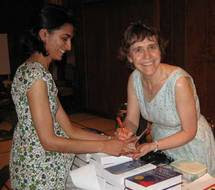I was recently reading a blurb for a book about 19th century prescriptivism (Language Between Description and Prescription: Verbs and Verb Categories in Nineteenth-Century Grammars of English by Lieselotte Anderwald) which referred to "one of the most violently hated constructions of the time".
Grammarians of the time called it "a clumsy solecism", "an incongruous and ridiculous form of speech", "an awkward neologism, which neither convenience, intelligibility, nor syntactical congruity demands".
Can you guess what it was?
The progressive passive. As in "the house is being built".
Unobjectionable, you say? HA! Many teeth were being gnashed and much hair was being pulled out by grammarians who insisted that the good old "the house is building" or "the house is a-building" were perfectly fine, thank you very much.
As late as 1871, in A grammar of the English language: for the use of schools and academies. With copious parsing exercises, William Bingham held forth, blaming the usual suspects:
Out of this form ("The house is a building") has grown, by the omission of the preposition, what grammarians call "the passive voice of the participle in -ing" as, "The house is building.". This latter is, in turn, almost entirely superseded by a very objectionable form engrafted upon the language by the newspaper press: -- "The house is being built" which literally means, the house is existing in a built state.
By the end of the 19th century, when grammarian Thomas Raynesford Lounsbury admitted that the new progressive passive was here to stay, he still opined
Double methods of expression, like "the house is building" and "the house is being built" will in some cases doubtless continue to exist side by side for a long time to come.Time makes fools of us all.
For more usages formerly criticized as wrong see this post:
http://katherinebarber.blogspot.ca/2015/02/10-common-usages-once-criticized-as.html

No comments:
Post a Comment